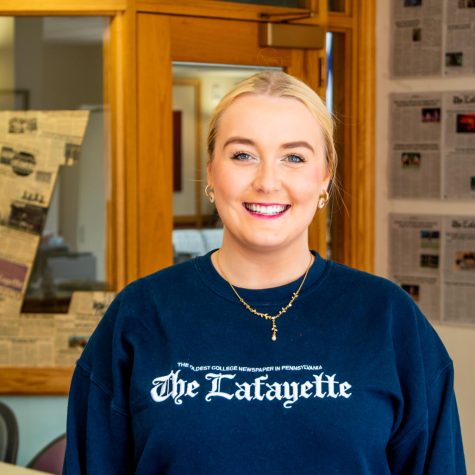Lafayette students are universally familiar with the demands of the Common Course of Study (CCS), like the writing requirement and the quantitative reasoning requirement. In the near future, however, students may need to take account of a new element of Lafayette’s general education program: a community service requirement.
Fatimata Cham ’23, director of Student Government’s Equity & Inclusion Committee, explained that interest in adding a community service requirement to the CCS grew within Student Government last semester. Additionally, Classics Professor Markus Dubischar, who is a member of the CCS Steering Committee, began a conversation about the potential for a critical race theory or community service requirement.
Cham, who is also involved with Dear Lafayette College, a collective of Black Lafayette students, attributed this growing interest to the pressure applied on the school by Dear Lafayette’s demands. The original list of demands, submitted to the college’s administration and Board of Trustees last October, contains a “Community Outreach” subsection in which the group insisted on greater engagement with the Easton area.
Outside of Student Government, another party interested in seeing this community service requirement realized is Kaleidoscope. According to the organization’s page on the Lafayette website, Kaleidoscope is a group of “social justice peer educators who encourage student leaders to take an active role in campus education on issues of multiculturalism, equity and social justice.”
To Kaleidoscope member Milena Berestko ’22, promoting the addition of a community service requirement is crucial. Berestko noted the disconnect between Lafayette College and the Easton community as a motivation for initiating the requirement.
“Everything we do as Peer Educators aims to awaken our community to the injustices it faces while talking about the root causes,” Berestko said. “Lafayette is part of the Easton community yet it is much higher on a social hierarchy, so service requirements would open students’ eyes to the issues present in the West Ward and in the Lehigh Valley and thus help them understand that their actions have a direct impact.”
When asked what their ideal community service requirement would look like, Cham and Berestko both explained that they want students to gain a greater understanding of the spaces they are occupying and to alert students to the needs and concerns of the people with which they live alongside in the Easton community. Cham also noted that a community service requirement as part of the CCS would allocate time for busy students to be specifically involved in service.
“Alongside the Landis Center, having students more involved in the community is really, really important, especially because we’re on this campus for four years,” Cham said. “But a lot of us don’t get the opportunity because of all our other commitments and extracurricular activities.”
Berestko noted the variety of possibilities regarding community service opportunities for students across disciplines. She said that the ability for service to be tailored to academic interests could get students passionate about their work.
“I would love to see students from an [Anthropology and Sociology] class working in Safe Harbor learning about the history of the Lehigh Valley, and Policy Studies students advocating for change in the law regarding the homeless in Easton,” Berestko said. “I would love to see students work with local business owners and with the Nature and Nurture Center to develop a climate mitigation plan and help those most harshly affected.”
Berestko concluded that there are multiple benefits to adding in a community service requirement to the CCS, not just for the students, but for the greater community as a whole.
“Lafayette administration and students must recognize that education is a communal activity, we owe land to Lenape People, we owe land to Eastonians due to recent expansions, and we have a responsibility to bridge the wealth gap,” Berestko said. “Since giving away money is easy, we ought to give our service and time, which is harder.”























































































































